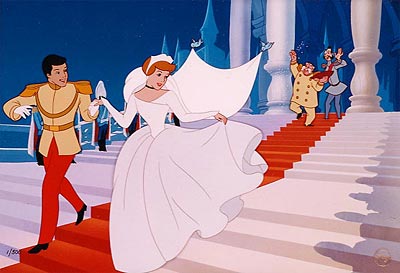You have no items in your cart. Want to get some nice things?
Go shopping
Endings are powerful things. A book can be head-spinningly wonderful for 449 pages, but those 449 pages stand or fall by what happens on page 450. The ending is what you take away from the book, your last sight of the characters you’ve followed for so long, and a bad one can make an otherwise great book seem, in retrospect, like a waste of a perfectly good week of your life.
Years of exposure to Disney films and fairy tales have taught us that a good ending is a nice one, with all characters tidily married or buried accordingly. While there’s a lot to be said for that kind of pleasant wish fulfilment, however, reality doesn’t work like that. For one thing, it has a frustrating habit of refusing to end. Just as you think you’ve cleared one problem up, ten more appear to take its place.
Likewise, despite the best efforts of the happy-ever-after brigade, even the most neatly packed ending can have another side to it. As a child, I never had much time for Cinderella until I came across the Grimm brothers’ version, in which the two Ugly Sisters are so desperate to squeeze their feet into that glass shoe that they cut off their toes and heels to manage it. Of course, the deception is noticed, and they end up not only with maimed feet but are struck blind for the crime of daring to impersonate a smaller-footed woman. To me, that boringly happy ending had suddenly become a lot more interesting. Never mind the wedding, what happened to the Sisters? How did they cope, with no feet and no eyes? And was Cinderella sorry about the whole thing?
Even the simplest ending has a loose end in it somewhere, and it’s no coincidence that the best modern retellings of fairy tales—Angela Carter’s collection The Bloody Chamber, for example—allow doubt to creep back in where it belongs. In her stories, you’re left wondering: will the characters be happy? Does it all work out? And most importantly, what happens next?
Really good endings—as opposed to simply nice ones—should live with you. They should bother you, confuse you, even upset you. There are certain endings which, when I first read them, made me violently confused, but that’s the beauty of a really clever ending. Some of the best ones take time to really sink in, and it’s only two, five, or ten years later, after you’ve lived a bit more, that they finally make sense.
If you don’t think about a book’s ending afterwards, the writer has gone wrong somewhere. I’ve spent more hours wondering what happens after the end of I Capture the Castle than I have thinking about the lives of certain friends, and it’s a mark of how well Dodie Smith has written the character of Cassandra that I’m neverendingly curious about what happens to her beyond the limits of the text.
That very human impulse of curiosity is a big part of what makes the cleverest twist endings work so well. The Turn of the Screw, for example, is specifically set up to blow the reader’s mind. Henry James wants you to spend the rest of your life trying to decide which of the characters you believe—and what that says about you. I used to think that the ghosts did it; now I tend to blame insanity, and I’ll probably come to six more conclusions before I reach 40. It still drives me mad that I’ll never know for certain what happened, which is precisely what James was trying to achieve.
Of course, not all endings upset the reader in a good way. I still remember the moment I realised that a book could have a bad ending. I was 13, and I was reading a Dorothy Sayers mystery. For some reason I had decided that this was the book that would prove my ability as an armchair detective. I went over each page twice and made painstaking notes. At last, I arrived at the denouement. I knew who had done it. I had motive, means and opportunity. My science was sound. My case was secure. I was ready to be right.
And then the murderer turned out to be someone completely different.
I was absolutely furious. I felt tricked, and I realised (with a horrible sense of shock) that writers do not, in fact, have a direct channel to my thoughts. They could, as far as I was concerned, mess things up.
The internet has since taught me that no matter how hard an author tries, and how much they personally believe in the ending they’ve written, they are always going to leave some readers dissatisfied. Everyone thinks they know best, everyone has a set idea in their head as to where the story should be going, and nobody likes to be proved wrong.
This isn’t a new phenomenon. George Bernard Shaw had to repeatedly fight the original producers of Pygmalion (better known as the play that spawned My Fair Lady) to stop them turning it into a happy-ever-after romance. Shaw wanted Eliza to dump Higgins, run away and become her own woman. Audiences, unfortunately, were mostly of the opinion that a nice marriage was more important than the fact that Higgins was an awful human being.
Not, as I’ve said before, that there’s anything wrong with craving a nice wedding. There are few more satisfying phrases in English literature than, “Reader, I married him.” But as in so many cases of getting what we wish for, happily ever after is never quite enough. We always want to know what happens next—do they have babies? If so, how many, and are they boys or girls, and do they grow up well, and then, what happens to them? And so on, forever.
The problem with books is that they have to end somewhere. Even million-word epics like The Forsyte Saga can’t keep rumbling on indefinitely. There has to be a conclusion. But given that, a book that allows us to wonder, that leaves room for doubts and speculation, feels much more fulfilling than the stock three weddings and a baptism. The best ending, after all, is the one that you make up.

About Robin Stevens
Robin started out writing literary features for Litro and joined the team in November 2012. She is from Oxford by way of California, and she recently completed an English Literature MA at King's College, London. Her dissertation was on crime fiction, so she can now officially refer to herself as an expert in murder (she's not sure whether she should be proud of that). Robin reviews books for The Bookbag and on her own personal blog, redbreastedbird.blogspot.co.uk. She also writes children's novels. Luckily, she believes that you can never have too many books in your life.




